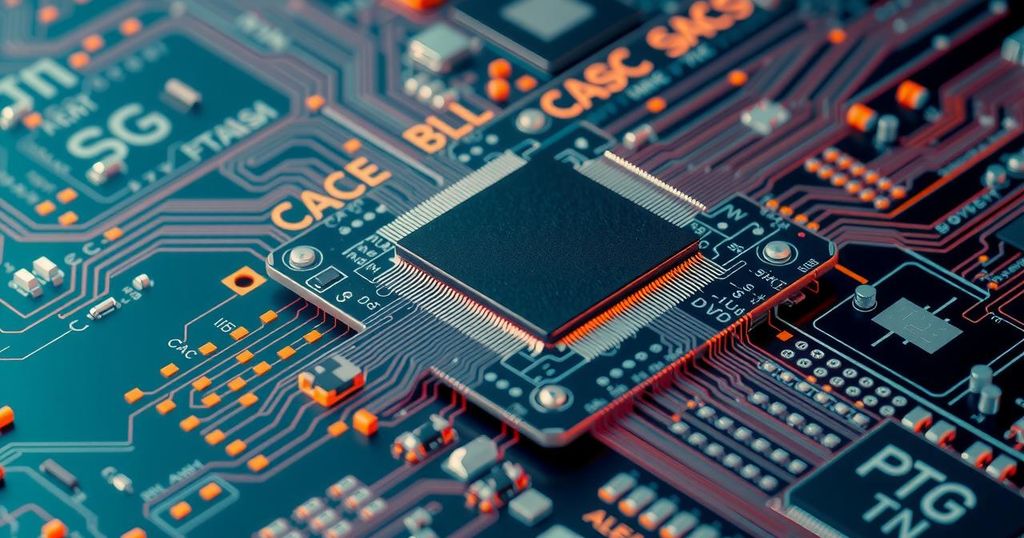Evolving Landscapes in Semiconductor Packaging: The Rise of 2.5D and 3D Technologies
The article delves into the evolution of semiconductor packaging technologies, focusing on 2.5D and 3D innovations. It explores the impact of material choices, performance enhancements, and cost considerations. Key advancements include silicon, organic, and glass interposers in 2.5D packaging and the introduction of hybrid bonding and microbump technologies in 3D packaging. These developments position semiconductor packaging as a crucial foundation for advancements in AI, 5G, and autonomous vehicles, emphasizing a future ripe with opportunity and challenge.
The landscape of semiconductor packaging technology has morphed into a realm of extraordinary innovation, shifting from fundamental 1D PCB systems to sophisticated 3D hybrid bonding techniques at the wafer level. This transformation invites interconnections with measurements shrinking to single-digit microns, advancing bandwidth capacity over 1000 GB/s, all while optimizing energy efficiency—a feat akin to a finely tuned orchestra, where each component harmonizes perfectly. Power efficiency emerges as a focal point, driven by groundbreaking methodologies that promise to redefine performance metrics.
In the realm of 2.5D packaging, interposer material choices outline its classifications: Silicon, Organic, and Glass. Silicon interposers stand vigilant in high-performance computing, renowned for their precise routing capabilities, yet face the dual-edged sword of high costs. This dilemma has led to innovative adaptations, such as localized Silicon bridges that maintain structural integrity while optimizing spatial limitations. Conversely, the Organic materials offer flexibility with cost savings but grapple with achieving the miniaturization benchmarks set by their Silicon counterparts.
Advent of glass-based interposer technology has enveloped the market in excitement, heralded by Intel’s advances. Glass interposers are like blank canvases, promising reduced thermal expansion and high stability, albeit hindered by maturity and production scaling challenges. On the flip side, 3D packaging is invigorated by microbump technology, yet it wrestles with hurdles like solder ball bridging and intermetallic compounds that challenge conductivity. The evolution of Hybrid Bonding has transformed the landscape even further, yielding exceptionally efficient connections at lower pitches, enhancing bandwidth and increasing power efficiency, though at the expense of manufacturing complexity and higher costs.
With these advances, the semiconductor packaging industry aligns itself closely with thriving sectors such as AI, 5G, and autonomous vehicles, marking its vital role as the backbone of next-generation integrated circuits (ICs). This exploration reveals an ecosystem ripe with challenges and opportunities, intricately woven within the fabric of technological advancement, as we delve into the details within the report.
Semiconductor packaging technology has been on an evolutionary path, adapting to the increasing demands of modern computing and communication systems. The transition from 1D PCB levels to advanced 3D hybrid bonding technologies represents a significant leap, enabling remarkable achievements in energy efficiency and bandwidth. Understanding these advancements is crucial for grasping how they impact high-performance computing, AI, and other key markets, as manufacturers strive to meet stringent performance requirements with innovative materials and methods.
In summary, the semiconductor packaging field is experiencing a profound transformation, with 2.5D and 3D packaging technologies leading the charge. Each material—Silicon, Organic, and Glass—offers unique benefits and challenges, shaping a diverse landscape where performance and cost efficiency evolve together. The future outlook reveals an exciting path ahead, marked by increased efficiency, reduced costs, and enhanced capabilities that will underpin the next generation of integrated circuits and applications in critical technology sectors.
Original Source: www.idtechex.com




Post Comment